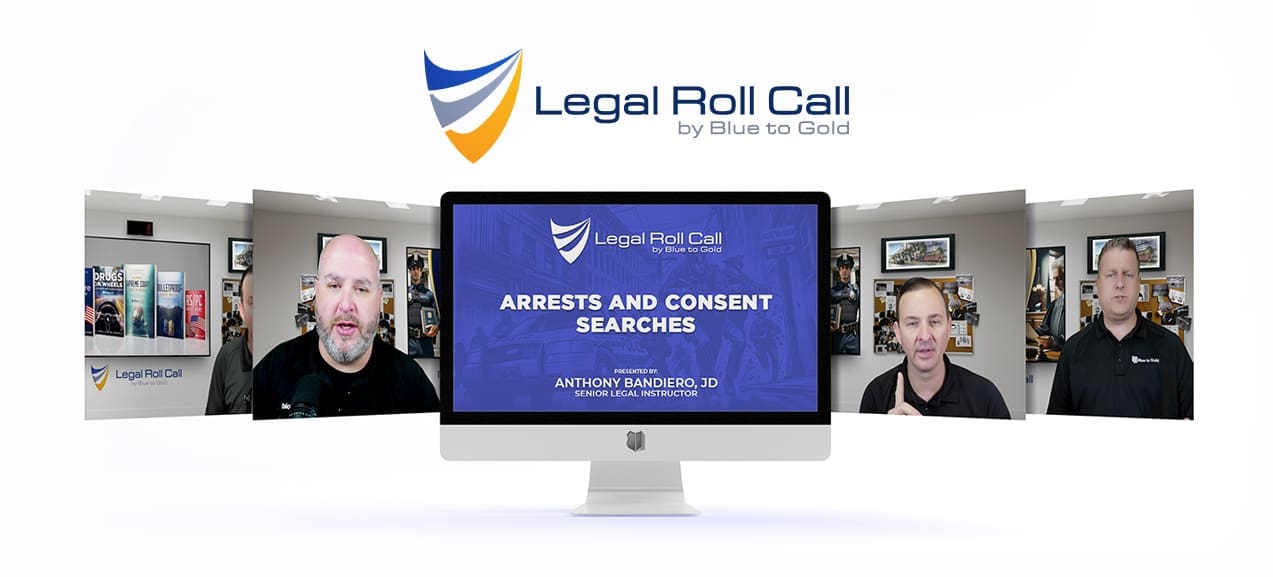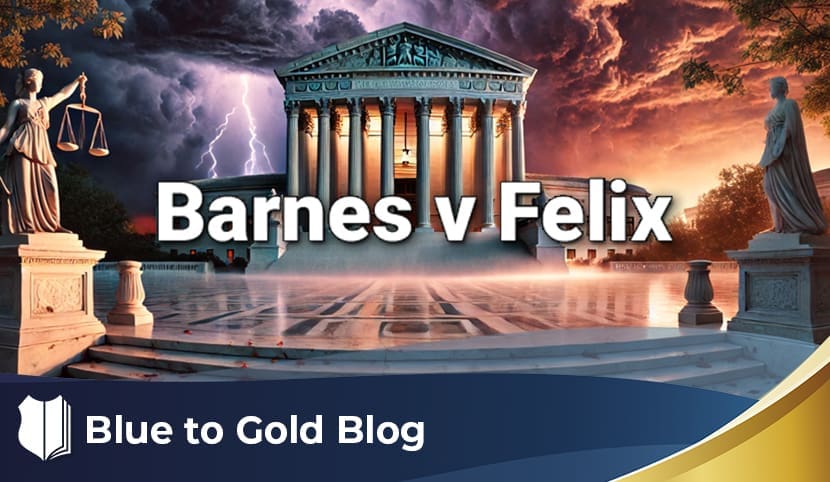Hello, everyone. We have received several questions about the recent U.S. Supreme Court decision Barnes v. Felix, so I wanted to take a moment to share some information and hopefully generate dialogue within your agency.
In Barnes v. Felix, Docket 23-1239, the question before the United States Supreme Court was whether courts should apply the “moment of the threat” doctrine when evaluating an excessive force claim under the Fourth Amendment.
The “moment of the threat” doctrine applied by the Fifth Circuit Court of Appeals considered whether the officer “was in danger ‘at the moment of the threat‘ that caused him to use deadly force against [a suspect]”. The Fifth Circuit Court of Appeals held that, under its precedent, “it is well-established that the excessive-force inquiry is confined to whether the officers or other persons were in danger at the moment of the threat that resulted in the officers’ use of deadly force.” This “moment of threat” test means that “the focus of the inquiry should be on the act that led the officer to discharge his weapon”, and that “[a]ny of the officers’ actions leading up to the shooting are not relevant for the purposes of an excessive force inquiry in this Circuit.” Barnes v. Felix, 91 F.4th 393, 397 (5th Cir. 2024).
The lower courts focused exclusively on the two seconds before the shooting, when Barnes’ car began moving with Officer Felix holding onto it.
The United States Supreme Court concluded that the appropriate standard to be applied was the totality of the circumstances, and that the “moment of the threat” doctrine places an improper temporal and factual limitation on a court’s consideration.
The Court held, “[T]he ‘totality of the circumstances’ inquiry into a use of force has no time limit. Of course, the situation at the precise time of the shooting will often be what matters most; it is, after all, the officer’s choice in that moment that is under review. But earlier facts and circumstances may bear on how a reasonable officer would have understood and responded to later ones… those later, ‘in-the-moment’ facts ‘cannot be hermetically sealed off from the context in which they arose.’”
In supporting this position, the Court referenced its earlier decision, Plumhoff v. Rickard, 572 U.S. 765 (2014), which involved the fatal shooting of a driver at the end of a “dangerous car chase” lasting more than five minutes. The driver had sped away from a traffic stop on a well-used road, and tried to outrun as many as six police cruisers at speeds sometimes exceeding 100 miles per hour. Eventually, the fleeing car ran into one of the cruisers and came “to a near standstill.” The driver, though, still tried to escape, pumping the gas in a way that sent his wheels “spinning” and then putting the car into reverse. At that point, one of the officers fired several shots into the car. In a suit brought against the officer, the driver’s daughter contended that those shots were taken when the chase was “already over.” The Supreme Court rejected that claim based on all that had transpired during the preceding five minutes – the driver’s “outrageously reckless” behavior, as well as his last-second efforts to again take flight.
In Barnes v. Felix, the Court did take pains to affirmatively recognize that its decision had no bearing on “whether or how an officer’s own ‘creation of a dangerous situation’ factors into the reasonableness analysis”, as that question was not before the Court. To that end, the Court summarized the true question before it thusly, “The question presented to us was one of timing alone: whether to look only at the encounter’s final two seconds, or also to consider earlier events serving to put those seconds in context. With that matter resolved, we return everything else to the courts below. It is for them now to consider the reasonableness of the shooting, using the lengthier timeframe we have prescribed.”
So, how does this impact law enforcement going forward?
From a strictly legal analysis, the Court’s decision should have no impact on use-of-force cases. Tennessee v. Garner, 471 U.S. 1 (1985), Graham v. Connor, 490 U.S. 386 (1989), and their progeny have all recognized that the reasonableness of an officer’s use of force is to be “judged based on the totality of the circumstances,” from the “perspective of a reasonable officer on the scene, rather than with the 20/20 vision of hindsight”. This “calculus of reasonableness” must allow for the fact that “police officers are often forced to make split-second judgments – in circumstances that are tense, uncertain, and rapidly evolving – about the amount of force that is necessary in a particular situation”, and this analysis is an objective one, without regard to any underlying intent or motivation of the individual officer.
Without the “moment of the threat” doctrine, there is greater risk of the judicial second-guessing Graham specifically prohibited. As the Seventh Circuit Court of Appeals previously recognized – unlike the court, police officers lack the “luxury of pausing, rewinding, and playing the videos [of the incident] over and over.” Horton v. Pobjecky, 883 F.3d 941, 950 (7th Cir. 2018). The God-like power to scrutinize an officer’s actions via body-cam or dash-cam footage, frame-by-frame, over months or years, makes complying with Graham difficult or impossible for some judges, attorneys, or agency administrators.
For a neoteric example of such potential post-hoc analysis, we need look no further than the concurrence in Barnes v. Felix, 91 F.4th 393, 401 (5th Cir. 2024), in which Judge Higginbotham expressed his desire for the totality of the circumstances approach, as this would allow the court to consider not just the “precise millisecond” when an officer deploys force, but everything that “ha[d] transpired up until” that time. And with that wider focus, Judge Higginbotham “would have found that Felix’s shooting of Barnes was unreasonable.”
The Sixth Circuit Court of Appeals in Smith v. Freland, 954 F.2d 343, 347 (6th Cir. 1992) exhibited wisdom when it noted, “Thus, under Graham, we must avoid substituting our personal notions of proper police procedure for the instantaneous decision of the officer at the scene… We must never allow the theoretical, sanitized world of our imagination to replace the dangerous and complex world that policemen face every day. What constitutes ‘reasonable’ action may seem quite different to someone facing a possible assailant than to someone analyzing the question at leisure.”











